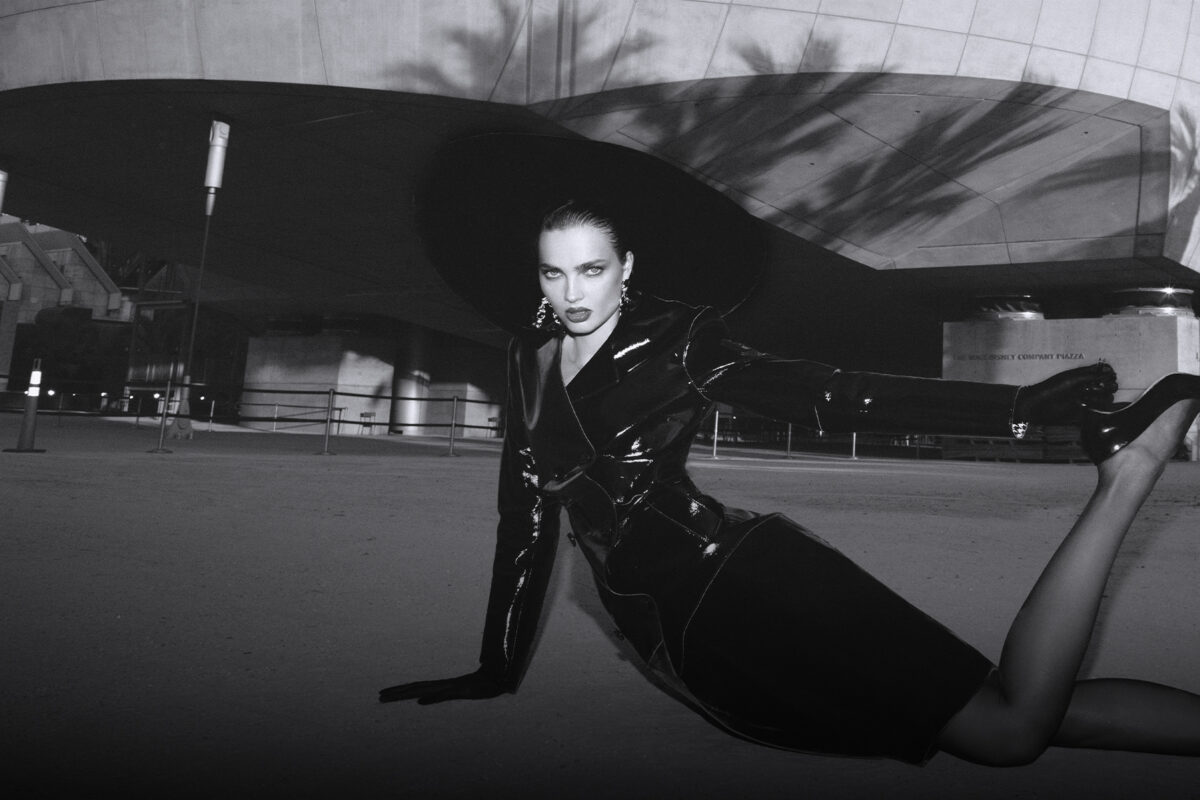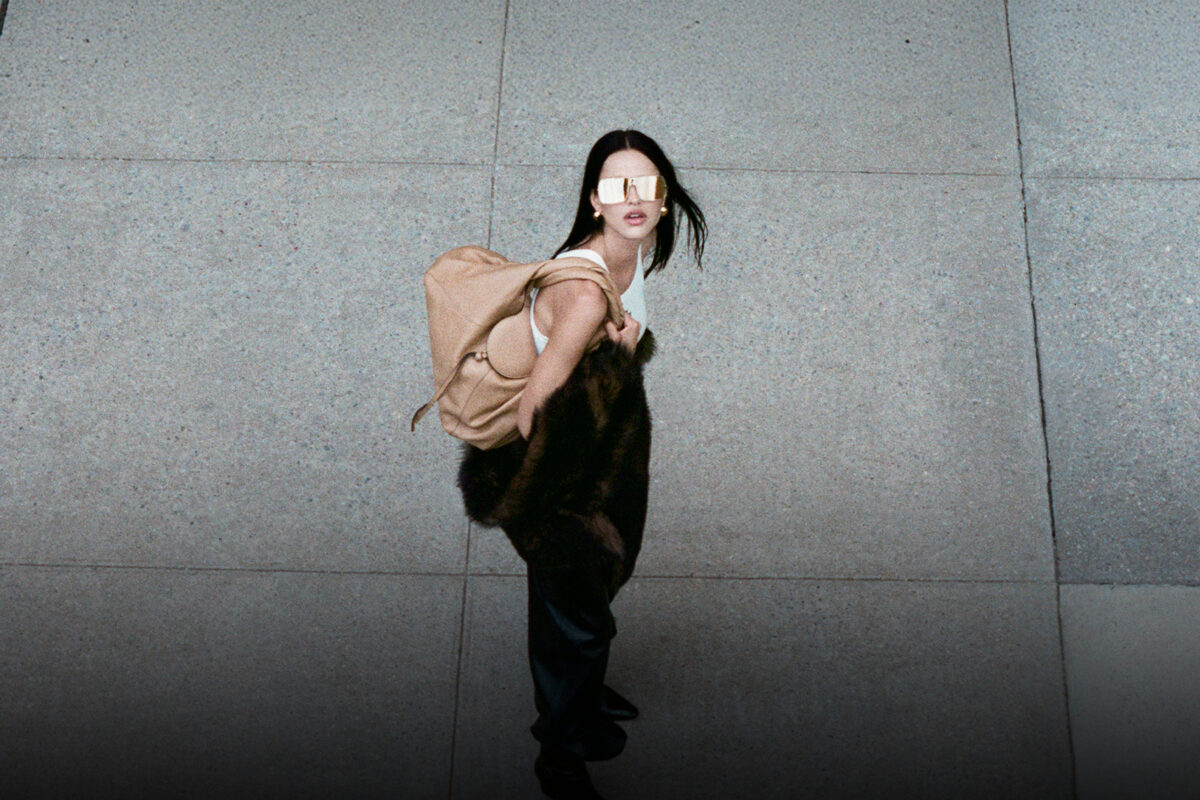The design powerhouses reflect on their formative first steps as style rookies and one-time roommates and an enduring friendship that began during their L.A. years
Photography by RAINER HOSCH
Words by MAX BERLINGER
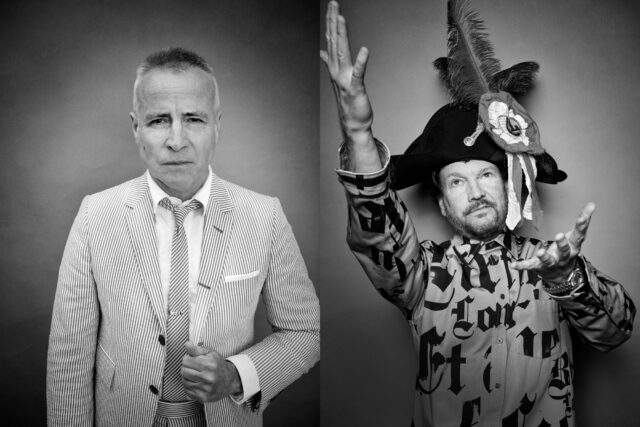
In the late 1990s, two men spot each other at a sleek, sexy bar in Los Angeles. They’re the only ones wearing suits and ties. The men are Thom Browne and Johnson Hartig, future phenoms of the fashion world.
To hear Hartig tell it, he first spotted Browne across the room, surrounded by a coterie of female pals. He then had a chance gym encounter (so L.A.) with one of the women, who advised him to go back to the bar on Friday. Hartig did so for two weeks in a row — to no avail. A year later they finally met at a house party. “The next day, I had him over to my house for tea,” Hartig says. “I lived not that far from him at that point, up in the hills. And that’s how our friendship started.”
The two men have built very different brands, both bristling with creativity. Browne left L.A. for New York and is known for his fantastical gray suits and gowns with couture-level craftsmanship, which Zoe Saldaña and Demi Moore wore to this year’s Met Gala. Out west, Hartig has made a name with Libertine, which crafts whimsical, colorful, beaded, and bedazzled creations beloved by Martha Stewart and style mavens.
The two have ridden the fickle tides of fashion, and all these years later they still call each other when they need support and have dinner when they’re in the same city.
Like every true friendship, they inspire each other to take risks while simultaneously grounding each other in the past, reminiscing of the days when Browne drove a car prone to breaking down all over the city and they lived on KFC chicken and coleslaw (ah, youth).
“In the ’90s, we were probably the only two people in L.A. wearing a jacket and tie.”
tb
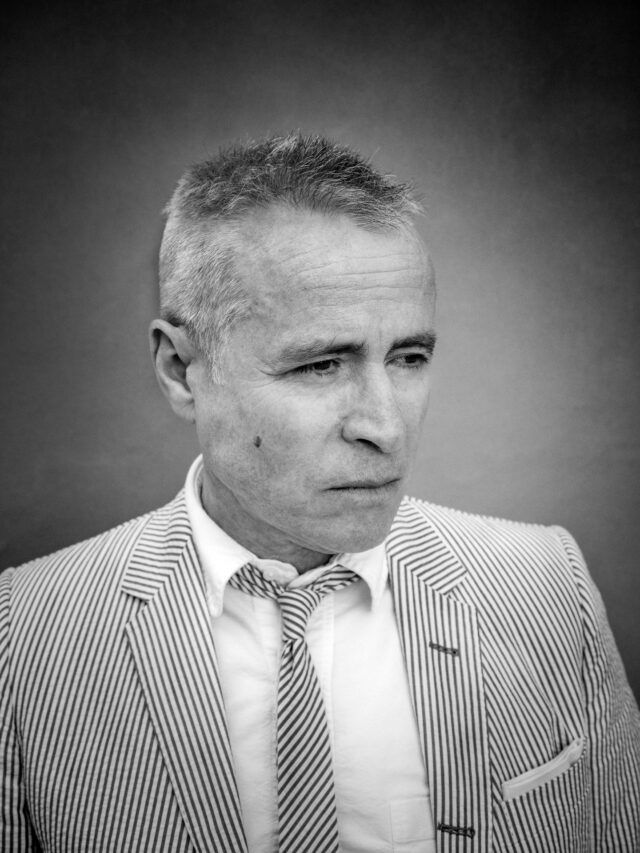
Today things are very different. Browne’s business was acquired by the Italian brand Zegna for $500 million in 2018, and he’s the president of the Council of Fashion Designers of America. Hartig’s wildly inventive ready-to-wear continues to flourish, with Larroudé and LeSportsac collaborations and an expansion into interior design.
Some 30 years after that first meeting, Thom Browne’s new Melrose Place store has just opened and the two have temporarily switched coasts, Browne beaming into a Zoom from a vacation in Big Sur while Hartig sets up a sales showroom in New York. Read on as the one-time roommates relive old times, embrace new ones, joke, cajole, and tease.
C MAGAZINE: Do you think being in L.A. or New York affects how you work?
TB: I don’t think of designers as being located in any location. You’re either a good designer or you’re not. It doesn’t matter where you live.
JH: You’re a genuine creative or you’re not. I’ve been amazed in 24 years of doing this how few real creatives there are in what ostensibly is one of the most creative businesses around. One thing Thom has that I don’t is fearlessness, or maybe more self-confidence. I think I always want to keep things safe for myself emotionally. And I don’t think Thom is burdened with that.
TB: What I find interesting is you’re the same, Johnson. You have always put ideas and interesting, beautiful things in front of people that are exactly how you want them to be seen. That’s fearless. That’s confidence. You couldn’t care less if anybody cares about what you do. You want people to see what you’re doing, what’s in your head, regardless of how they’re going to respond.
C: This exchange is interesting because it does what a great friendship does: It makes you see yourself in a way you hadn’t before.
JH: Yeah. It’s what friendships are for.
TB: Also, we were drawn to each other because I always saw that we — especially Johnson — were true to ourselves in a sea of people who were self-conscious and worried about what others thought of them.
C: How would you characterize your dynamic? Is one more outgoing and one more shy?
TB: Are you kidding? You’re actually asking that?
JH: I’m so embarrassed by some of the things Thom does when we’re out. [Laughs] I would definitely say I’m the one who has the more vocal and big personality.
C: I don’t know, sometimes behind closed doors, suddenly there’s a swap — Thom bullies you or he’s mean?
JH: He’s sort of the ballast that supports. I can call him and it’s the same Thom that was 30 years ago. It’s just a level of comfort that you know what you’re going to get.
TB: We always remember where we were and who we were, because I still have that person who has only $20 to his name in the back of my head. I always do. I think we’re both like that; we never forget that.
My experience as president of the CFDA is that there are so many people who are trying to do it, and you just see that they’re not going to make it happen. That’s unfortunate. But it’s satisfying to be able to look back and think, OK, we’ve actually done it.
C: Let’s wind back 30 years. How did you first meet?
TB: Well, I moved to L.A. in ’92 or ’93, and we met each other early into that, right, Johnson? We were probably the only two people in L.A. who were wearing a jacket and tie.
JH: This was the late ’90s. We were just coming off of grunge, so there weren’t a lot of suits and ties. I was wearing it because it looked rather provocative and I was kind of fake it till you make it. I might have had bright pink–dyed hair then, and I’d wear this great conservative pin-striped suit.
“It’s easy to get seduced into the lifestyle of L.A.”
tb
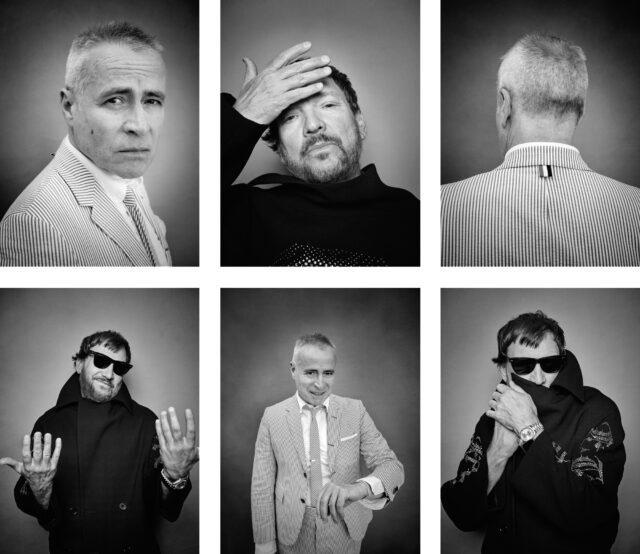
C: Was there an immediate connection?
JH: Pretty immediate because within a couple of weeks we were talking about starting a clothing line together.
TB: We became friends because we felt like we were very unique in L.A. It started with the way we dress but also the way we thought about things and people.
One of the reasons I moved back to New York is that L.A. is not the most motivating place. It’s easy to get seduced into the lifestyle of L.A. and the mentality of a lot of people there, which is just hanging out, not doing very much.
C: Were you both interested in fashion at the time?
JH: No. We were deadbeats, in a way. At that time in L.A., you have to remember, you could live in an apartment for $500 or $600. It cost nothing. It was the city that people would go to and have a fairly pleasant lifestyle for almost no money.
TB: I was just saying the other day, “I remember life in L.A. was so nice, and we literally had no money.”
JH: Nothing!
TB: And we lived a really nice life.
JH: You could go to Les Deux several nights a week and have drinks if you wanted. And it was always such a fun scene there. And we’d end up dancing with Michèle Lamy [the artist and partner of designer Rick Owens] afterward. It was a really fun period in L.A. A really fun period in the world before phones and social media.
C: You said you were considering collaborating. Were you both plotting your fashion careers?
TB: We had ideas of doing something together, but we didn’t have the means or the resources to do it. Johnson, being as resourceful as he always is, was able to start his collection. Nobody has done it like he’s done it. So many people have taken the ideas of what Johnson does and have made collections and businesses from that model. But Johnson was at the forefront and so inspiring to me. And he was the smartest businessperson too.
JH: That’s so interesting. Thank you, Thommy, for acknowledging that, because I was talking to this business … almost like a counselor or therapist recently, trying to sort out some problems. I was telling her that I have always admired your business acumen. And since the sale of your company, it’s been such a mind bender for me, constantly comparing myself to you. And it does me no good at all. I’ve done tremendous things, but I’m not rich.
TB: But Johnson, you’ve made money from day one. Your business has been successful from day one. It took my business 15 years to make any money. It was just a different approach. The success is all relative.
“We were just coming off of grunge. I might have had bright pink–dyed hair.”
jh
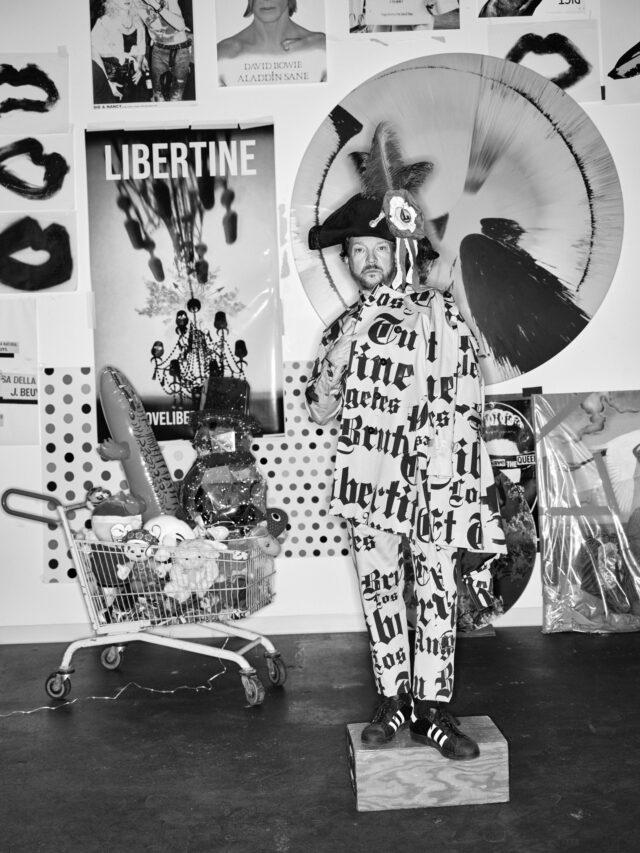
C: You’ve both had decades-long careers in a very fickle business.
TB: The longevity comes because when you see Johnson’s collections, you see him, and nobody can take that away. There’s also a timeless aspect when you do something so personal. That can go on forever because it is such a part of who you are, and it will last as long as you want it to.
C: You both have very specific, clear points of view in your work. Did it take time to hone those visions?
TB: I knew exactly what I wanted from the beginning. It was just that very simple, classic idea.
JH: When I look at some of Thom’s clothes, I’m so overwhelmed, surprised, and amazed. Thom keeps things more internalized than I do. Occasionally I’ll see something that’s so breathtakingly beautiful, and not that Thom’s not beautiful, but I do wonder, Wow, where is this coming from? I tend to just wear it all on my sleeve — sometimes in my clothes, sometimes in my interiors. And Thom’s technical ability is just astonishing. I’m not really a talented clothing maker, but I’m a very talented decorator. And if I have one gift, it’s the ability to put all these disparate things together and make something happen.
TB: For me, it’s humbling to see the life that you put in front of people, and it is so inspiring and so unique. What’s inspiring is your ability to just stay so true to yourself.
C: Why did you leave L.A., Thom?
TB: I was tired of being poor and having to worry about where the next $20 was going to come from. I had a car that broke down all the time. I needed a fresh start.
JH: I remember when he told me he was moving back to New York, that he had to get a job, and it was kind of devastating because we had become very good friends. It was a depressing summer because my first relationship had ended and I was getting over that. I was between apartments and Thom said I could live with him while I was looking, so we lived together for maybe four or five months in the flats of Los Feliz. That place was so hot and it didn’t have AC. Remember?
TB: Of course.
C: How do you keep up with each other now?
TB: We don’t talk that often, but any time we’re in the same city, we see each other. We’re having lunch next week in L.A.
JH: Oh, Thom, I was going to ask you, can we go to the Polo Lounge? The Beverly Hills Hotel Polo Lounge?
TB: Sure.
JH: One of Thom’s first girlfriends, many years ago, was a woman named Cindy. So I’ll call Thom and leave messages saying [in a fake woman’s voice], “Thom, it’s Cindy, just thinking about you.”
C: Do you talk about business?
JH: A few years ago I was telling Thom about our sales numbers, and they weren’t extremely high. And he said, and this is just an example, “Well, if you’re at 10 million, just do 20 million. It’s not that much harder.” And in my mind, I was like, Jesus, fuck. It made me wonder, What do you know that I don’t know? Because it’s like I’m missing that business gene. I got all the creative genes, but I didn’t get that gene.
TB: Johnson, we just approached what we do differently. I went about my collection in the very old-fashioned way: doing collections, paying for them, spending to build a business that could become what it has become. Johnson was a pure entrepreneur in how he approached his collection. He has, I think, done it better than anybody.
“I can call him and it’s the same Thom that was 30 years ago.”
jh
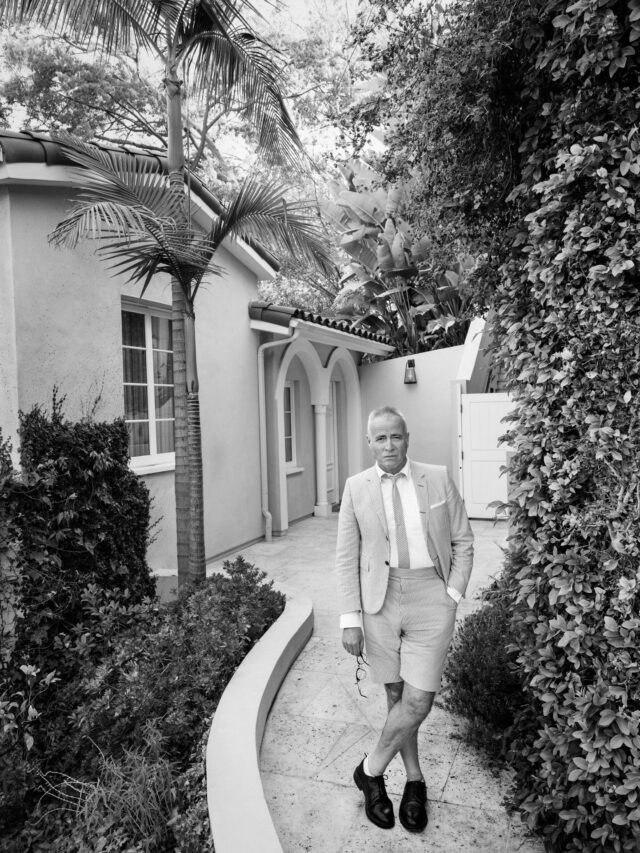
JH: Thank you, Thommy.
TB: And also, I almost went out of business around 2009.
JH: I guess we didn’t talk about business because I wasn’t even aware that all was happening — which, looking back, makes me feel like I was a remiss friend. But fashion and business are not what we talk about when we’re together.
C: What was a really surprising moment in your relationship?
JH: Something that has surprised me is that since Thom has gotten so rich, I haven’t gotten any of the perks. I haven’t had one week on a yacht. Nothing.
Oh, another cute anecdote — please put this in print — is that as Thom and I were starting out we made a vow and a promise with blood that whoever ended up doing better in this business would take care of the other. So the day I heard that Thom had sold his company, I called him and said, “What the fuck? Can I retire?” And he said, “Yes, you can, but not for 10 years. And we’re about year seven.”
C: Do you have any reflections on what this friendship means, to have someone who’s been a support for that long?
TB: It’s nice to have the comfort in a friendship like this.
JH: A throughline that we had, one that’s incredibly sad, is that both our mothers got dementia at about the same time.
C: I’m sorry.
JH: It was nice to also have each other to reflect on that. It’s just as Thom said, and as I said, it’s just a constant. I know that I could call Thom and it wouldn’t be any different than it was the day I met him.
TB: The same, Johnson. You’re the same too.
JH: Thank you. And so I think we’re just there. We’re just there. We’re always there.

This story originally appeared in the Fall 2025 issue of C Magazine.
Discover more STYLE news.
See the story in our digital edition


